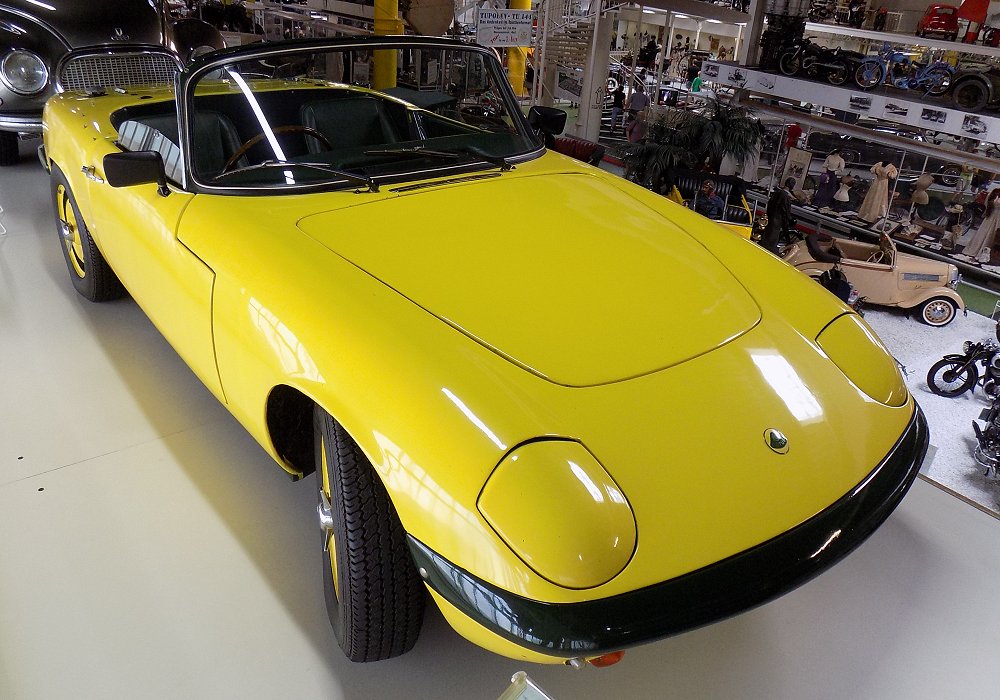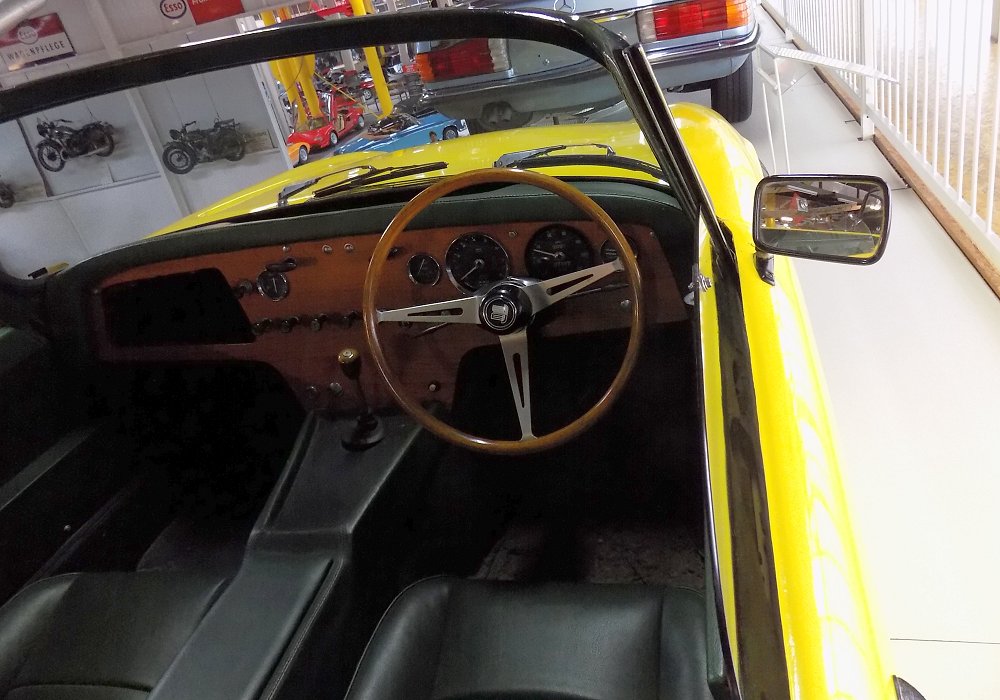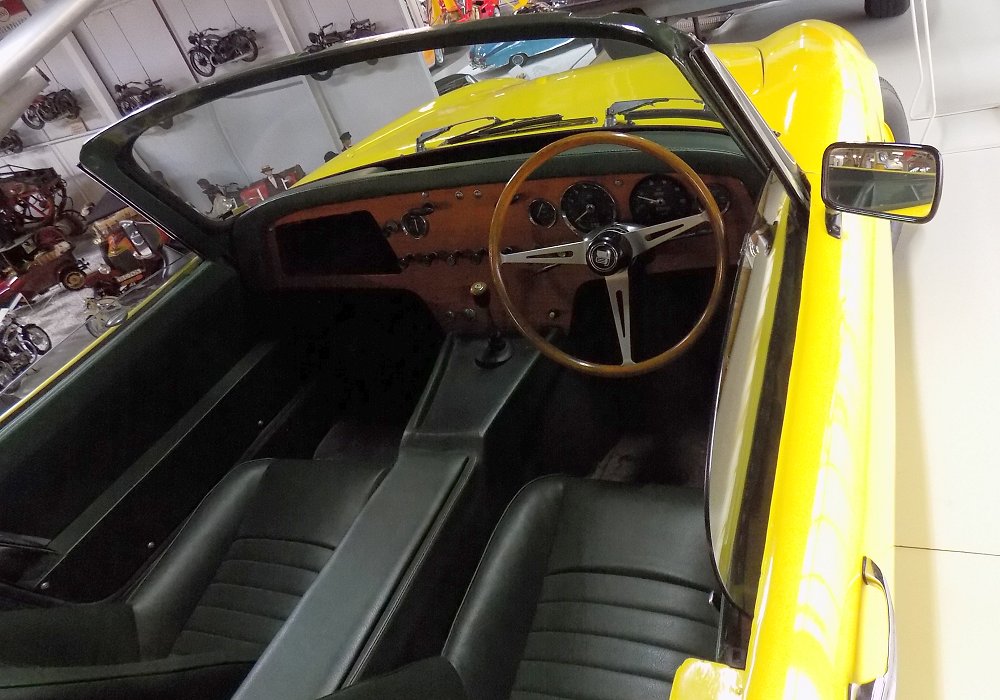Description
The Lotus Elan S2 Roadster SE was the quintessential expression of Colin Chapman’s philosophy—an elegant, featherweight roadster that combined brilliant engineering with effortless beauty and pure driving pleasure. Introduced in 1965 as part of the Series 2 range, the SE (Special Equipment) version elevated the Elan’s performance and refinement to new heights, making it one of the most accomplished sports cars of the 1960s. Compact, nimble, and astonishingly alive to the touch, the Elan S2 Roadster SE became the definitive Lotus for the open road—light, fast, and utterly engaging.
The Elan had already redefined expectations when it debuted in 1962. It replaced the fragile, expensive Elite with a car that was easier to build, more reliable, and no less innovative. The backbone chassis—a central steel spine branching into a Y-shape at the front—was a masterstroke of simplicity and strength. It provided exceptional torsional rigidity while keeping weight to a minimum. Over this, Lotus fitted a fiberglass body that was both aerodynamically clean and beautifully proportioned. The S2 retained this structure but incorporated a series of refinements, including improved trim, revised electrical systems, and upgraded mechanical components, while the SE version added extra power and sharper response.
Visually, the Elan S2 Roadster SE was a study in balance and grace. The car’s design was compact and athletic, with flowing curves, delicate chrome accents, and pop-up headlights that gave it a character all its own. Its proportions—long bonnet, short tail, and wide stance—were perfectly judged, lending it both elegance and agility in appearance. The removable fabric top and slender windshield emphasized its lightness and sense of freedom, while its small dimensions made it look as though it had been sculpted purely for the driver’s enjoyment.
At its heart was the brilliant Lotus Twin Cam engine, one of the most respected powerplants of the era. Based on Ford’s 1,558 cc Kent block, it was transformed by Lotus’s aluminum twin overhead camshaft cylinder head designed by Harry Mundy. In SE specification, it produced 115 horsepower—thanks to higher compression, modified cam profiles, and twin Weber 40 DCOE carburetors. The engine was free-revving, eager, and full of character, delivering smooth power all the way to its redline. In a car weighing just 680 kilograms, it gave the Elan S2 SE exceptional performance: 0 to 60 mph in around 7 seconds and a top speed of 120 mph, placing it in the same league as much larger and more expensive sports cars of the time.
The four-speed gearbox, adapted from Ford’s close-ratio unit, had short, precise throws and a satisfyingly mechanical feel. Power was sent to the rear wheels through a differential mounted within the backbone frame, ensuring excellent traction and balance. The suspension, as always with Lotus, was a masterpiece of geometry. The front used unequal-length wishbones and coil springs, while the rear featured Chapman’s innovative strut design with lower wishbones and driveshafts serving as part of the suspension linkage. Combined with rack-and-pinion steering and four-wheel disc brakes, this setup gave the Elan S2 SE handling that bordered on perfection.
On the road, the Elan S2 Roadster SE delivered a driving experience unmatched in its time. The steering was alive with feedback—quick, light, and impossibly precise. Every input from the driver was met with an immediate, fluid response. The car seemed to anticipate direction changes, flowing through corners with poise and balance. It wasn’t just fast; it was agile in a way that few cars before or since have managed. Even at moderate speeds, the sense of connection was exhilarating. The car felt like an extension of the driver, a mechanical instrument that translated intention into motion with zero delay.
The suspension tuning gave the Elan a supple ride despite its sporting focus. It absorbed bumps without harshness, maintaining grip and composure even on rough roads. Combined with its light weight, this allowed the Elan to maintain astonishing cornering speeds. Drivers could carry momentum through sweeping bends with confidence, adjusting balance effortlessly with throttle or steering. It was this combination of delicacy and precision that made the Elan so admired—not just for its speed, but for the joy it offered at any pace.
Inside, the S2 SE was simple yet charming. The cabin was snug, with low-slung bucket seats trimmed in vinyl or leather, a wooden dashboard with Smiths instruments, and thin-rimmed steering that placed the driver close to the controls. There were no luxuries to distract from the experience—just the essentials, beautifully arranged. The soft top folded neatly behind the seats, and while weather protection was minimal, few owners cared. The car was about sensation: the sound of the Twin Cam rising through the revs, the scent of warm oil and fuel, and the rush of wind over the cockpit as the world blurred past.
The SE version gave the Elan an extra edge that enthusiasts loved. Its improved engine tuning, close-ratio gearbox, and sharper throttle response made it ideal for spirited driving. Many owners used their cars in club competition, and the same qualities that made it a sublime road car made it a formidable performer on the track. It was agile, reliable, and endlessly rewarding—a driver’s car in the truest sense.
The Elan S2 Roadster SE occupied a sweet spot in the model’s evolution. It retained the purity of the original design while offering noticeable improvements in power and refinement before the later S3 and S4 models added more weight and complexity. Its lightness, directness, and simplicity gave it an immediacy that even modern sports cars struggle to replicate.
Production of the S2 lasted until 1966, and the SE variants remain among the most prized by collectors today. They represent the Elan at its most balanced—beautifully engineered, delightfully fast, and utterly alive in the driver’s hands.
The Lotus Elan S2 Roadster SE was not about brute strength or opulence; it was about purity of motion. It distilled the essence of driving into its most concentrated form—a car that rewarded finesse, skill, and passion. Even decades later, it remains one of the most joyful and communicative sports cars ever built, the perfect embodiment of Colin Chapman’s vision of lightness and precision in harmony.





